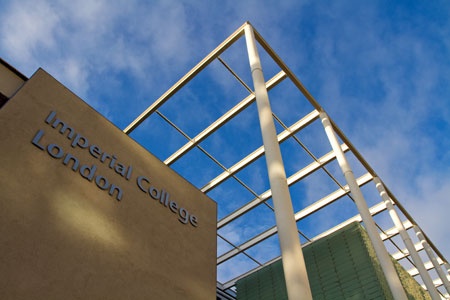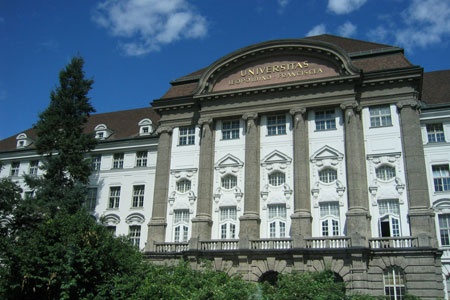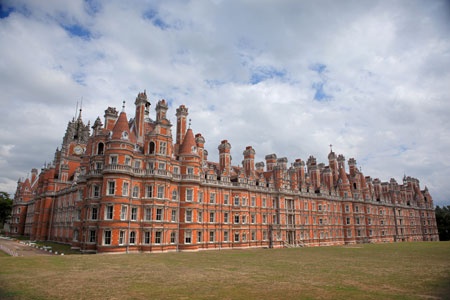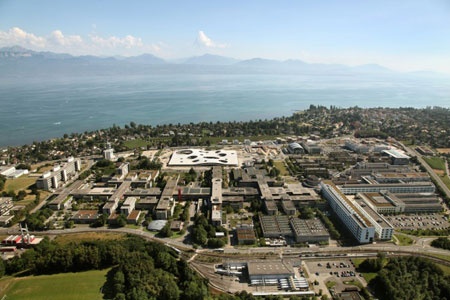A university’s international outlook matters. How can an institution expect to attract the very highest calibre of staff and students if it fails to look beyond its own national borders?
Both the diversity of a university’s student body and the extent to which its academics collaborate with international colleagues are signs of how global an institution really is, and these factors are among the 13 carefully calibrated performance indicators that allow Times Higher Education to produce the most comprehensive global university rankings in the world.
Like last year, THE has compiled a list of the top 100 most international universities using the “international outlook” indicator of its World University Rankings methodology. All the institutions that feature in our World University Rankings 2014-15 top 400 have been considered.
This measure considers each institution’s percentage of international staff, its international student numbers and the proportion of its research papers published with a co-author from at least one other country.
Here are the top performers.
100 - 71
70 - 41
40 - 16
15. University College London (UCL)

International outlook: 90.6
Rank in 2014: =12
Rank in THE World University Rankings 2014-2015: 22
UCL was established in 1826 to open up education in England to students of any race, class or religion. It was the first university in Britain to admit women on equal terms.
Describing itself as “London’s global university”, the institution has students from 150 countries and boasts an international network of more than 200,000 alumni.
14. University of Oxford

International outlook: 90.7
Rank in 2014: =12
Rank in THE World University Rankings 2014-2015: 3
Academic staff at this prestigious English university come from almost 100 different countries and territories, while among its 22,000 students the figure stands at more than 140.
The University of Oxford is the oldest institution in the English-speaking world, and has educated 26 British prime ministers, including the incumbent David Cameron.
13. University of Vienna

International outlook: 91
Rank in 2014: 14
Rank in THE World University Rankings 2014-2015: 182
On 12 March 1365, Duke Rudolph IV founded the University of Vienna, meaning that the Austrian institution is celebrating its 650th anniversary this year.
More than 25,000 of its nearly 92,000 students are classed as international, and the university hosts 2,000 exchange students from all around the world each academic year.
12. Universität Basel

International outlook: 91.2
Rank in 2014: =9
Rank in THE World University Rankings 2014-2015: 75
Founded in 1460, this Swiss university is the oldest in the country. Today it houses Switzerland’s largest library, and can count philosophers Friedrich Nietzsche and Karl Jaspers among its alumni.
=10. Australian National University

International outlook: 91.3
Rank in 2014: =7
Rank in THE World University Rankings 2014-2015: 45
Based on 145 hectares of parkland in Australia’s capital city, Canberra, ANU can trace its origins back to 1930.
It counts six Nobel laureates among its faculty and alumni, and through its international partnerships it offers students the opportunity to undertake a seven-week internship in the US Congress or spend time studying at a range of locations in Asia.
=10. Curtin University

International outlook: 91.3
Rank in 2014: N/A
Rank in THE World University Rankings 2014-2015: 351-400
Based in Perth, Western Australia, Curtin boasts Australia’s third largest international student population.
Named after visionary Second World War-era prime minister John Curtin, the institution has more than 50,000 students across nine campuses, including sites in Malaysia and Singapore.
The institution was not eligible for this ranking last year as it did not make the top 400 of our World University Rankings 2013-2014, and makes its debut in the top 10.
9. Nanyang Technological University

International outlook: 92.5
Rank in 2014: 11
Rank in THE World University Rankings 2014-2015: 61
A research-intensive public university, NTU in Singapore has more than 32,000 undergraduates and postgraduates at its four colleges of Engineering, Business, Science, and Humanities, Arts, and Social Sciences.
Its medical school, the Lee Kong Chian School of Medicine, was set up jointly with Imperial College London.
8. Imperial College London

International outlook: 92.7
Rank in 2014: 6
Rank in THE World University Rankings 2014-2015: 9
Founded in 1907, Imperial is a science-based university located in the heart of England’s capital city.
The institution has students from more than 120 different countries, and across all full-time new admissions to Imperial in 2013-14, 64 per cent were from outside the UK.
7. University of Innsbruck

International outlook: 93.4
Rank in 2014: =7
Rank in THE World University Rankings 2014-2015: 201-225
The University of Innsbruck was founded in 1669 and is one of Austria’s oldest universities.
Today, with more than 28,000 students and 4,500 staff, it is western Austria’s largest institution of higher education and research.
6. Royal Holloway, University of London

International outlook: 94.4
Rank in 2014: 5
Rank in THE World University Rankings 2014-2015: 118
Royal Holloway is located 19 miles from central London and has more than 8,700 students from more than 100 countries.
Just over 20 per cent of its students are from outside the European Union.
5. École Polytechnique

International outlook: 94.5
Rank in 2014: 28
Rank in THE World University Rankings 2014-2015: 61
Nicknamed “X”, École Polytechnique is France’s leading engineering school and is located in the suburbs south of Paris.
The institution boasts economists Alfred Sauvy and Jean Tirole among its alumni.
4. National University of Singapore (NUS)

International outlook: 94.9
Rank in 2014: 4
Rank in THE World University Rankings 2014-2015: 25
NUS is Singapore’s flagship university, and has 16 faculties and schools across three campus locations.
Established more than a century ago as a medical school with just 23 students, the institution now has more than 37,000 students from 100 countries across the world.
3. ETH Zürich - Swiss Federal Institute of Technology Zürich

International outlook: 96.6
Rank in 2014: =2
Rank in THE World University Rankings 2014-2015: 13
Founded in 1855, ETH Zürich today has more than 18,000 students from over 110 countries, including 3,900 doctoral students.
Albert Einstein received his diploma here in 1901.
2. University of Geneva

International outlook: 96.8
Rank in 2014: =2
Rank in THE World University Rankings 2014-2015: 107
Founded in 1559, the University of Geneva hosts about 16,000 students from more than 140 different countries, and is Switzerland’s second largest university.
It offers more than 280 types of degrees and more than 250 continuing education programmes.
1. École Polytechnique Fédérale de Lausanne

International outlook: 98.8
Rank in 2014: 1
Rank in THE World University Rankings 2014-2015: 34
Of the 10,000 students studying at EPFL, 50 per cent are from Switzerland with the other half coming from overseas
Our number one interNational University boasts more than 250 on-campus laboratories situated in 136 acres on the shores of Lake Geneva.
View the full Times Higher Education World University Rankings 2014-2015 results
Register to continue
Why register?
- Registration is free and only takes a moment
- Once registered, you can read 3 articles a month
- Sign up for our newsletter
Subscribe
Or subscribe for unlimited access to:
- Unlimited access to news, views, insights & reviews
- Digital editions
- Digital access to THE’s university and college rankings analysis
Already registered or a current subscriber? Login

